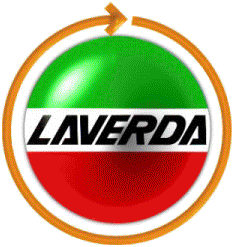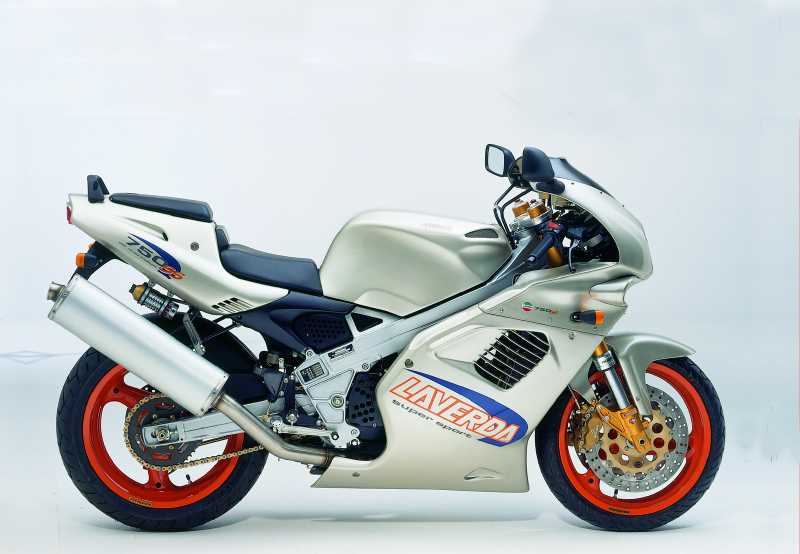|
TROUBLE ISSUES
I will not refer here to the faults which have been
already pointed out in the general description of the bike (see "Road
test" section of this site).
I would rather now try to focus on technical faults, those
which are unanimously considered as a source of failure by the international
community of Laverda enthusiasts (see ZANELIST forum topics).

Alternator
A U.S. engineer and also a Laverda enthusiast suggests to
modify the winding of the alternator.
In his opinion, the factory alternator is a source of
various electric faults, like poor battery charging for instance.
You can
view his website or read the following information:
1. The wire ends that connect to the voltage regulator
have a propensity to burn which is caused by a higher than normal voltage
being generated through the alternator winding.
2. The smaller in diameter the wire, the higher the
electrical pressure i.e. voltage will become.
Furhermore, the magnet structure on the crankshaft appears
to be of the hardy ALNICO variety AL (alluminum) NI (nickel) CO (cobalt),
in short, a very powerful magnet.
High Voltage causes electrolyte to stress and go bad
prematurely, or worse destroy your regulator.
3. His solution consists in rewinding the alternator
with 14 gauge square magnet wire in the same direction and with the same
windings per pole considering that square magnet wire allows for more
electrons to flow per revolution of the magnet structure at a lower voltage
and higher current flow.
Make sure the square wire lines up nicely and that there
are no gaps in the windings.
He has NEVER had a discharge since he made this mod
and that was last year !

Connection of 2 yellow wires
between the alternator and the regulator/rectifier
The standard factory connectors are not reliable and will sooner
or later end up burnt or fried.
It is most advisable to replace them by better quality
components (apply to your nearest dealer of radio and electronic supplies,
he should have a solution for you !).
After having carefully stripped and twisted your wires,
you will have 2 options to fit a connector:
1°) You simply put the wire within the connector and
hold it tight with the little screw made for this purpose.
2°) With a soldering iron, you tin the wire end and
the connector itself and solder both together.
Plug both connector ends together and there you have
it !
Once in a while, check that plastic insulator of each
connector (on the alternator side) has not melted.
If such is the case, you will most likely encounter
unpleasant symptoms like erratic engine cutoff (it really gets on your
nerves when overtaking a truck on a 2 lane road !)
Pay careful attention to the wiring itself : if both
wires have lost their copper shine, the wiring has probably suffered
overheating.
If your connectors keep on melting, you'd better think
of a new wiring all the way from alternator to regulator/rectifier !

Side stand safety relay unit
When side stand is not raised, this relay device simply
cuts off power supply to the electronic control unit commanding fuel
injection and ignition (which we call the ECU), thus stopping you from
running the bike with the stand being extended.
This same device can cause sporadic engine cutoff due
bad connection or malfunction.
It is recommended to remove it from the bike and to
replace it with a by-pass plug creating a permanent power supply to the
ECU (see
ALTO PERFORMANCE website)

Battery
Power is supplied by a standard spillable 12 V battery with
a capacity of 18Ah (I ignore the size, the make and part number of the
stock battery).
Apart from the horn and lights, battery feeds the starter motor,
the fuel pump and the ECU.
According to all well informed "laverdisti" (read" Laverda
enthusiasts"), it is worth purchasing a maintenance-free dry cell 12
V battery with a capacity of 16 Ah (12V/13 Ah at least) capable of good
cranking power (minimum of 500 cranking Amps).
The ODYSSEY type PC 680 made in the U.S.A. by
HAWKER ENERGY PRODUCTS seems to be widely
valued.
Since I could not find any importing agent or distributor
in France for this type of battery, I rather bought the GENESIS EP series
12V13Ah battery type G13EP P/N 0770-2007 made also by HAWKER ENERGY
PRODUCTS.
Due lack of space of the battery compartment (especially
in width), I had to slightly sand both sides of battery prior to install
it.
It is advisable to proper maintain the battery condition
and its nominal capacity to keep both the electric starter and the ECU
operative.
A special battery tender for motorcycle shall be used
(the ACCUMATE model for instance designed
for HAWKER batteries and made by TEC MATE International
Corporation in Belgium or the famous OPTIMATE model), banning other
car battery chargers which are inappropriate because of their excessive
charging power.
The ACCUMATE battery tender designed for motorcycles includes
accessories like a plug set in a waterproof holder to be connected to
the tender on the one end and to the battery poles on the other end,
plus a fuse for necessary protection.
The true benefit of such plug is to allow quicker and
easier charging operation without the painful removal of the battery.
WARNING !
In case of a flat battery, do not use jumper cables
to connect your flat battery to that of your car to start the bike.
In doing so, you would apply excessive cranking
amps to your bike's electrics and you would likely ruin your regulator
or worse your ECU (engine control unit) !
In such case, you'd be well advised to rather put
your battery in charge using an adequate battery charger like the Accumate
or the Optimate.

Regulator/rectifier
The standard factory mounted DUCATI regulator seems to be
faulty in the long run (see the above alternator heading) and should
be wisely replaced by the NISSHO IWAI P/N SH673-12 unit made in Japan or
the ELECTREX
RR51equivalent
made in England.

Ignition leads
The leads linking ignition coils and spark plugs shall
be replaced by a set of better quality.E
Indeed, a cheap spark plug wire set is liable to produce
electromagnetic interferences which can cause erroneous signals to be sent to the ECU.
Engine driveability
problems will occur like intermittent cutoff and loss of power.
A faulty spark plug wire might also cause short-circuit
(carbon deposit on wire end connector on the spark plug side is a token
of a burnt lead).
According to well-informed "laverdisti", purchasing
a set of MAGNECOR ignition leads like the 8mm ELECTROSPORTS 80
P/N 2011
is worth while (see link to MAGNECOR Europe website on my welcome
page).

Spark plugs
To make sure ignition system is serviceable, standard
spark plugs shall be profitably replaced with a quality set of
PLATINUM or IRIDIUM type equivalent (either
made by NGK or DENSO).
Product codes are the following:
- DCPR 8 EVX or DCPR 9 EVX for NGK PLATINUM
type
- DCPR 8 EIX for NGK IRIDIUM
type (available as
from the end of June 2004 in France)
- IXU 27 for DENSO IRIDIUM
type

Electric starter
Starting problems may occur and are reported by
Laverdisti i.e. the Laverda enthusiast
riders community.
The factory Denso starter motor makes a show of reluctance to
crank the engine when you hit the START switch.
Many posts from Laverdisti can be found on the
ZANELIST forum stating various
failures (starter motor burnt out, starter jammed in drive mode for instance)
and one of them even suggests standard Denso starter motor be replaced
with a more reliable device like the original starter motor of the
SUZUKI HAYABUSA for instance.
Our U.S. engineer and Laverda
enthusiast
(see the above alternator heading on top of page) suggests to improve
the starter motor return ground:
1. The
return ground to the starter is weak because the surfaces are usually
coated with oil from exposure to the crankcase area. Oil is a dielectric
(i.e. an insulator) and can work in between the 3 bolts holding the starter
in place.
2. His
solution consists in creating 2 new return grounds off of two of the
bolts on back of the starter and giving them their own return grounds
to the battery ground.
3. Problems
with the stock Denso starter motor
originate in its too small diameter which gives less torque. If the starter
were a half inch larger in diameter, it would solve the cranking problem.

|




![]()